The 10 Biggest Stadiums in the World (2025 Edition)
Updated on
Published on
.webp)
Crowds change how space feels. Inside the largest stadiums in the world, sound rolls like weather and a scoreboard looks the size of a city block. If you have ever wondered what is the biggest stadium in the world, or which venues actually pass the 100,000 mark, this list maps the heavyweights by official seating capacity and explains why each one matters. It is a tour of scale, design, and ritual that shows how architecture turns gatherings into memories.
At a glance
- Biggest stadium in the world: Rungrado 1st of May Stadium (Pyongyang), 150,000 official capacity (Olympics.com).
- Largest active, routinely used venue: Narendra Modi Stadium (Ahmedabad), 132,000 seats (ICC).
- Largest in the United States: Michigan Stadium (Ann Arbor), 107,601 seats (Michigan Athletics).
- Eight of the ten entries are U.S. college football venues clustered between 100,077 and 107,601 seats, a scale validated across official athletics sources and national roundups (ESPN).
- For comparison, Europe’s largest by permanent seats is Wembley Stadium at 90,000 (Wembley Stadium).
The numbers behind the list
- What we counted: Official seating capacity as published by venue operators, teams, governing bodies, or owner-authorized sites.
- Source order: Operator or governing-body pages first, then architect or league pages, then top-tier encyclopedic references like Britannica when officials do not publish a number.
- Renovation caveat: Capacities can shift after upgrades. When credible sources diverge, the most recent official figure takes priority.
1. Rungrado 1st of May Stadium — Pyongyang, North Korea
The conversation about the biggest stadiums in the world still begins on Rungra Island. Rungrado’s petal-like canopy crowns an official 150,000 seats, a number recognized by the International Olympic Committee’s newsroom and long cited by global references. Usage is infrequent, yet its mass-games scale remains unmatched, which is why it sits atop any global capacity list in 2025. Even with occasional outside estimates that suggest fewer seats after refurbishments, the published capacity holds as the headline figure. (Olympics.com)
- Capacity: 150,000 official, the current No. 1 worldwide (Olympics.com; Britannica). (Olympics.com)
- Opened: 1989, primarily for football and national ceremonies (Britannica).
- Why it matters: An extreme outlier in both scale and symbolism, it anchors the phrase largest stadium in the world.
2. Narendra Modi Stadium — Ahmedabad, India
If you want a working, ticketed answer to what is the biggest stadium in the world in day-to-day use, Ahmedabad’s cricket colossus is it. The 132,000-seat bowl hosts internationals, IPL finals, and civic mega-events with modern circulation, broadcast positions, and a multi-pitch square that keeps the calendar busy. Its recent redevelopment created a venue that pairs colossal capacity with contemporary amenities for fans and broadcasters. The number is affirmed by the sport’s global governing body and the stadium’s operator. (ICC)
- Capacity: 132,000 seats, the world’s largest active sporting venue (ICC).
- Introduced/rebuilt: 2020–2021 redevelopment on the historic Motera site (ICC).
- Why it matters: A modern, frequently used giant that defines the phrase largest stadium in the world for everyday fans.

3. Michigan Stadium — Ann Arbor, United States
“The Big House” is the United States capacity leader at 107,601, and it proves that a low-slung bowl can feel both endless and intimate. Week after week, it delivers six-figure Saturdays that rival super-clubs for sheer headcount, with a crowd energy that is part family reunion, part civic ritual. Continuous renovations preserved classic sightlines while adding modern concourses and premium spaces. It is also a magnet for record events, from hockey to blockbuster concerts. (Michigan Athletics)
- Capacity: 107,601 official (Michigan Athletics). (Michigan Athletics)
- Opened: 1927, with major modernizations since (Michigan Athletics).
- Why it matters: The flagship of American 100k venues within the largest stadiums in the world.
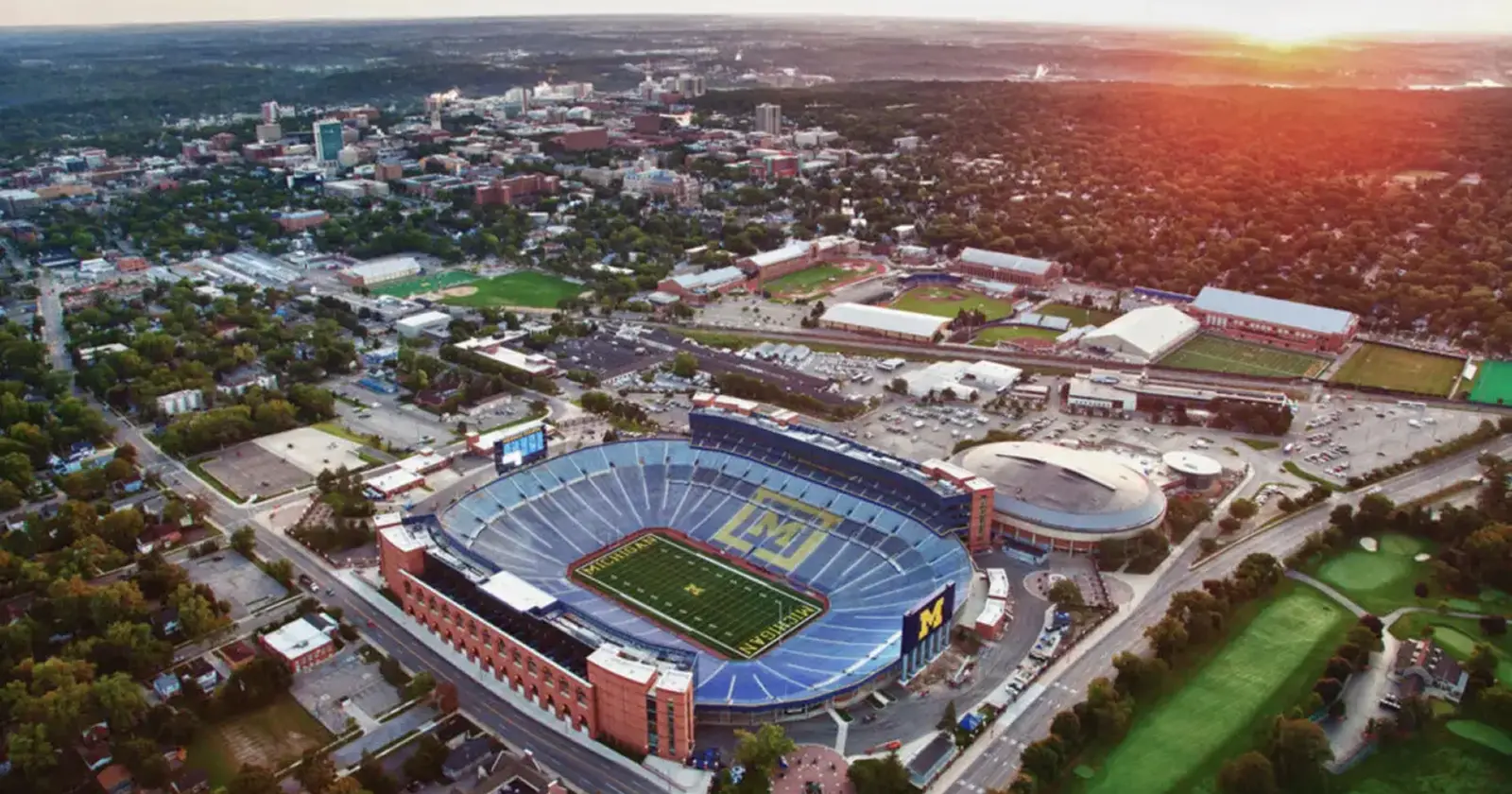
4. Beaver Stadium — University Park, United States
Penn State’s home pushes 106,572 seats and shows how steady expansions can build a cathedral of scale without losing its campus soul. White Out nights have become a national viewing event, and the building continues to evolve through multi-year upgrades to fan circulation, amenities, and accessibility. Even as improvements arrive, the six-figure profile remains the calling card. It is a dependable No. 2 in the U.S. by seats and a fixture in any global capacity list. (Penn State Athletics)
- Capacity: 106,572 official (Penn State Athletics)
- Opened: 1960, expanded repeatedly across decades (Penn State Athletics).
- Why it matters: Consistent six-figure scale that embodies the U.S. weight class within the biggest stadiums in the world.
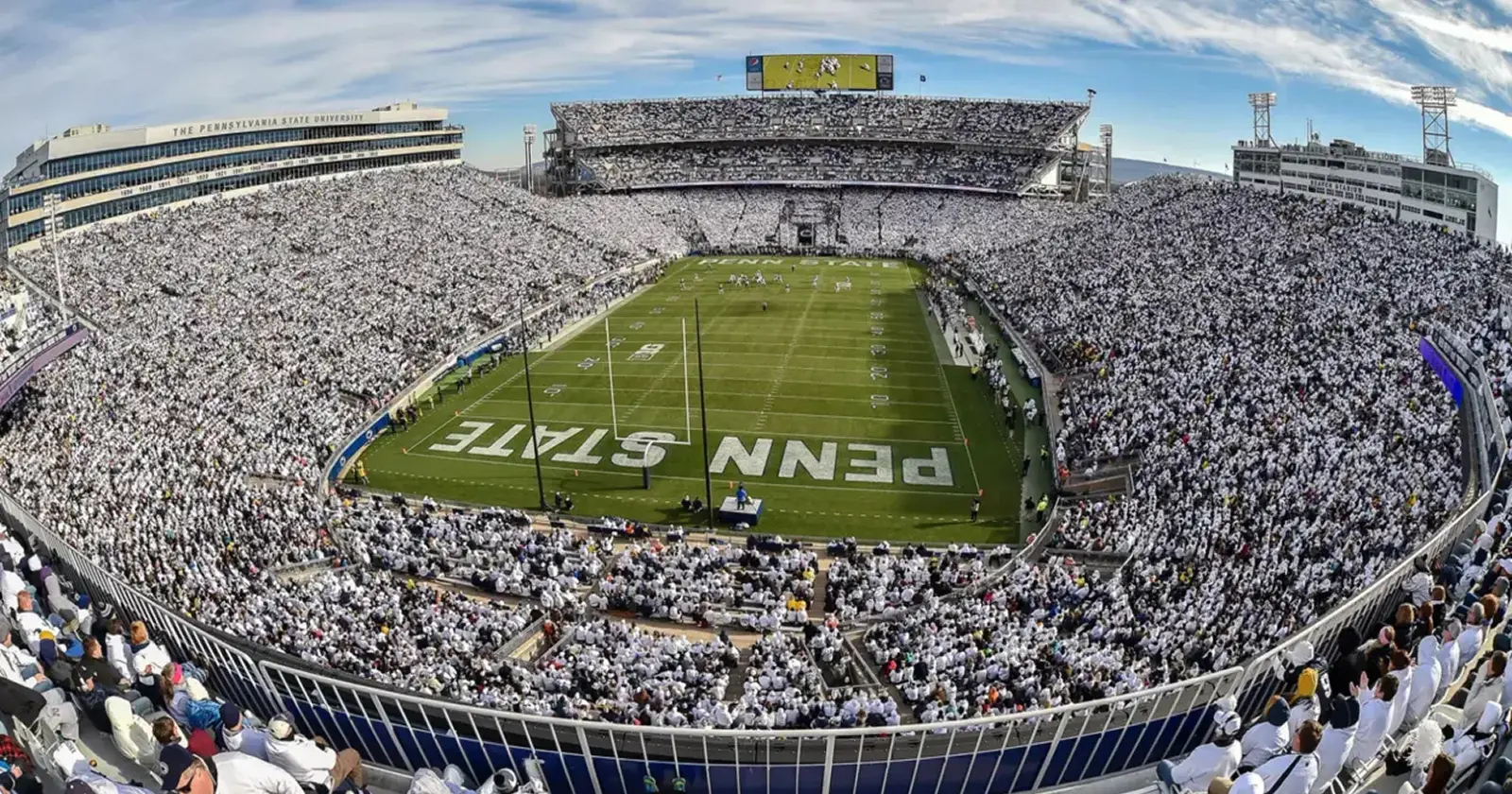
5. Ohio Stadium — Columbus, United States
“The Horseshoe” blends heritage and heft at 102,780 seats, wrapping a century of lore around modern upgrades. The open end that gave it a nickname now frames a game-day scene that belongs on every sports bucket list. Concourses, suites, and tech have been refreshed without sacrificing the bowl’s character. Few places illustrate how tradition and capacity can coexist this elegantly. (Ohio State Athletics)
- Capacity: 102,780 official (Ohio State Athletics).
- Opened: 1922, with major renovations over time (Ohio State Athletics).
- Why it matters: A century-old landmark that still ranks among the largest stadiums in the world by seats.

6. Kyle Field — College Station, United States
Texas A&M’s “Home of the 12th Man” lists 102,733 after a two-year redevelopment that modernized nearly every fan touchpoint. The bowl’s geometry keeps energy pinned to the field, which is why visiting teams often talk about volume as much as talent. Premium areas sit alongside massive general seating, a design balance many big stadiums now try to emulate. It is proof that scale and comfort can share the same footprint. (Texas A&M Athletics)
- Capacity: 102,733 official (Texas A&M Athletics).
- Opened/redeveloped: 1927 origin, full redevelopment debuted in 2015 (Texas A&M Athletics).
- Why it matters: A modernized 100k venue that kept the identity Aggies prize.
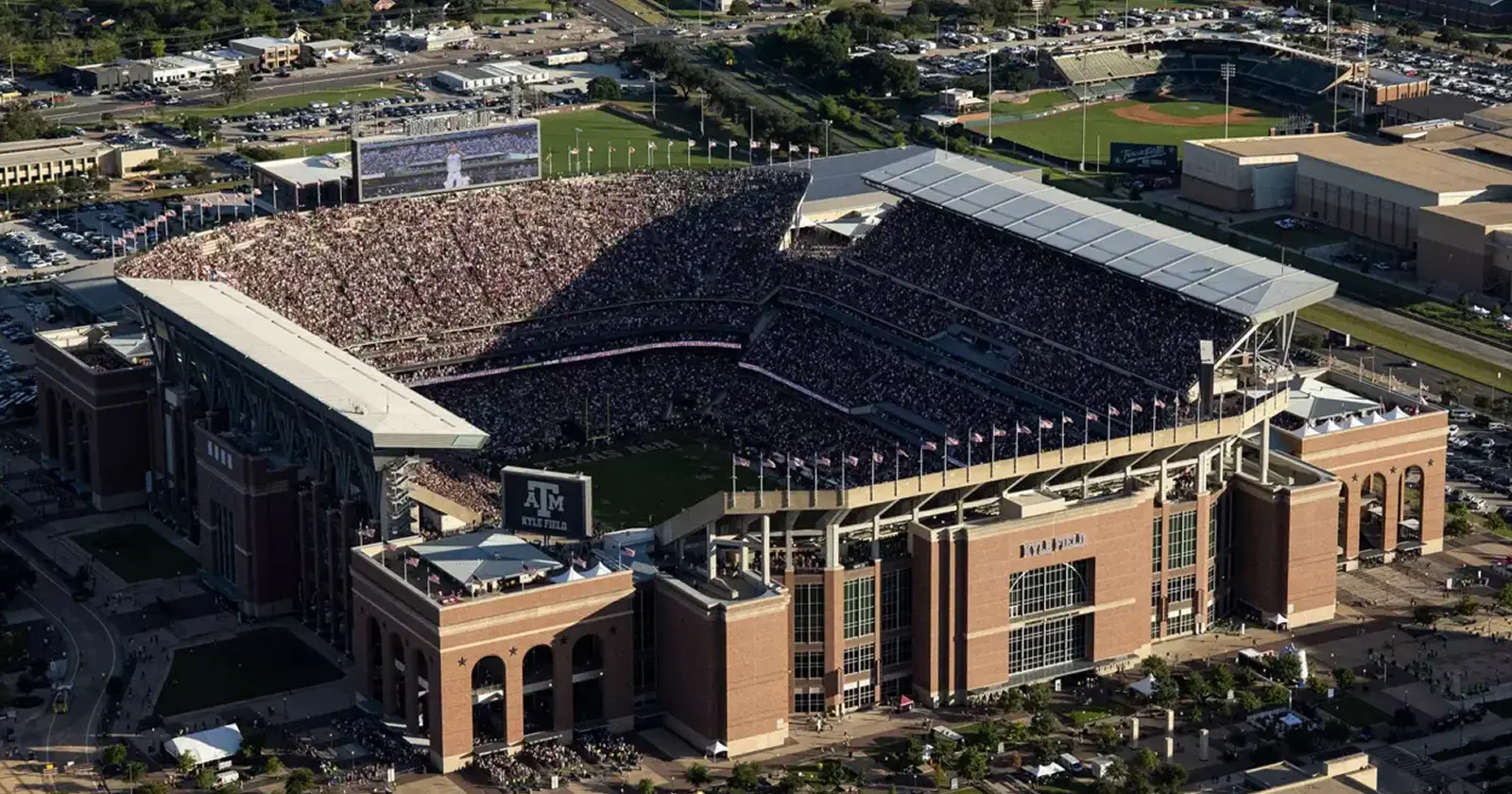
7. Tiger Stadium — Baton Rouge, United States
Death Valley is thunder poured into concrete, officially 102,321 after the south end expansion. Night games feel electric, and the bowl’s proximity keeps sound stitched to the field in a way that television never fully captures. The upgrades added capacity and comfort without dulling the edge that made the place famous. It is a Southern icon that still plays at national scale. (LSU Athletics) LSU
- Capacity: 102,321 official (LSU Athletics).
- Opened: 1924, with expansions and renovations through the modern era (LSU Athletics).
- Why it matters: A 100k cauldron that earns its place among the largest stadiums in the world.
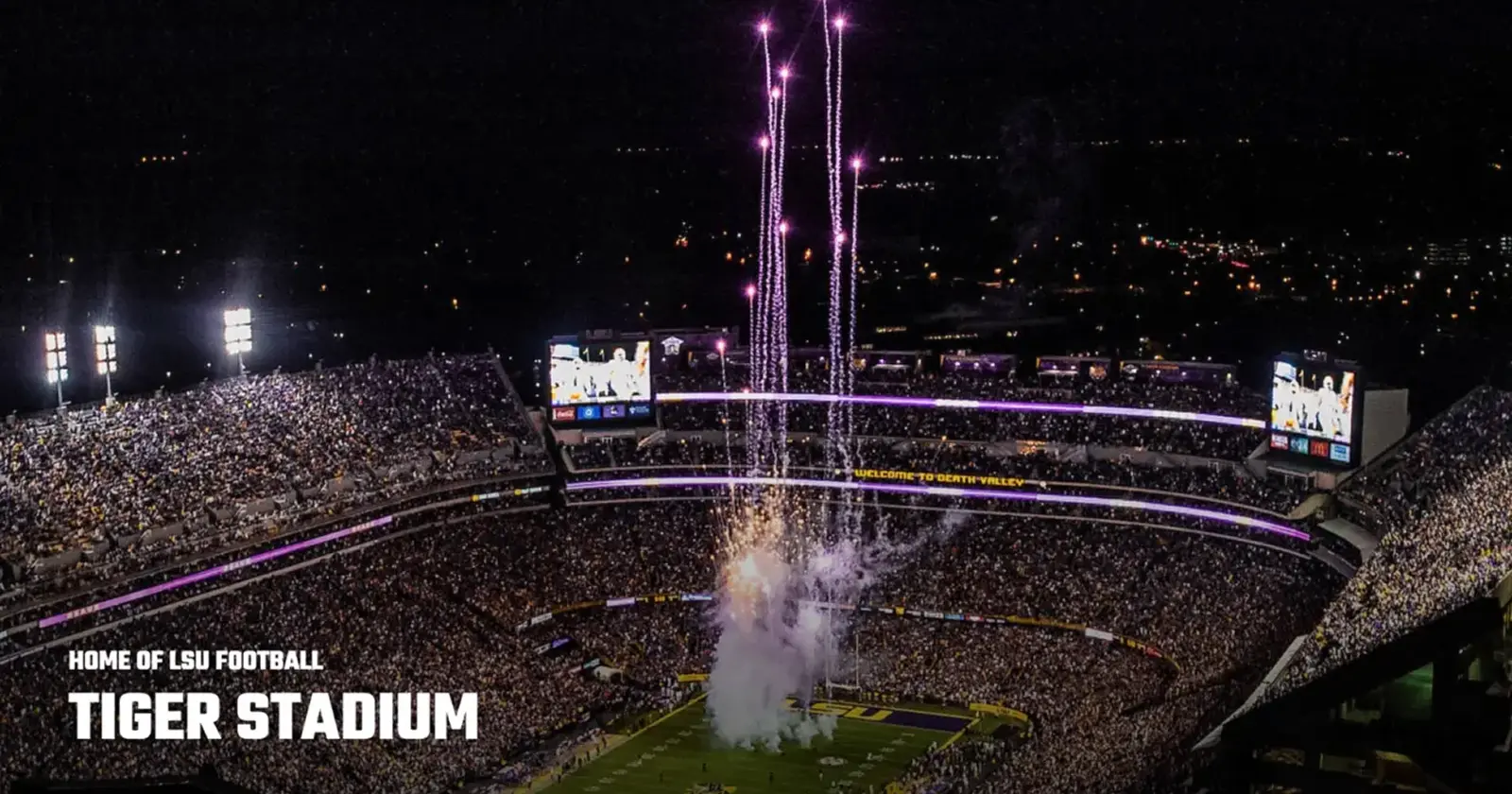
8. Neyland Stadium — Knoxville, United States
Tennessee’s orange amphitheatre sits at 101,915 after recent upgrades that added club spaces and new social decks. The stands rise steeply, which traps noise and creates the feeling that the crowd is right on top of the action. Long-running enhancements aim to preserve character while improving comfort and access. It is both a museum of memories and a live engine of Saturdays. (Tennessee Athletics)
- Capacity: 101,915 official after 2022 works (Tennessee Athletics).
- Opened: 1921, upgraded many times across a century (Tennessee Athletics).
- Why it matters: A carefully steeped 100k design that sounds even bigger than it is.
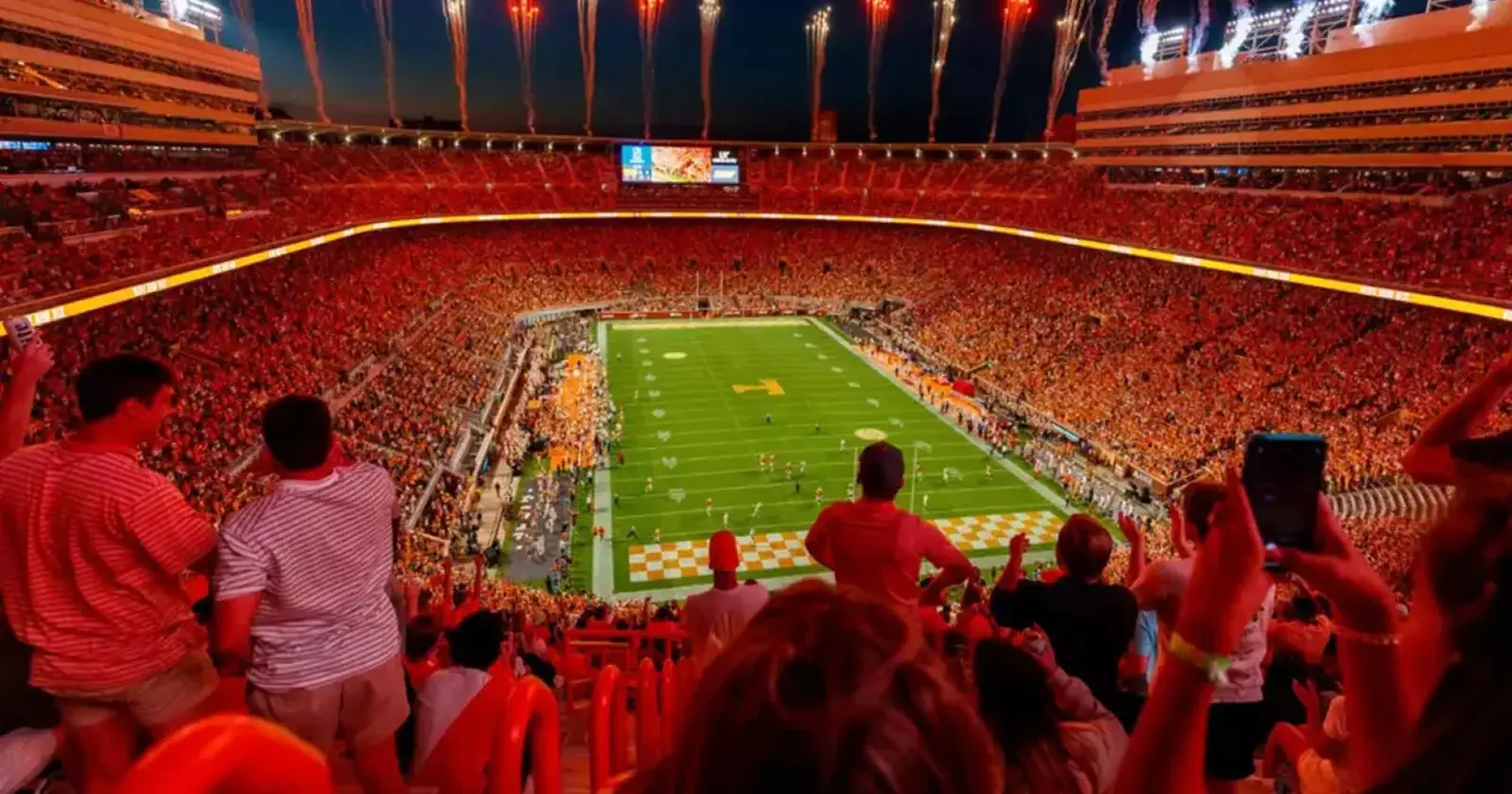
9. Darrell K Royal–Texas Memorial Stadium — Austin, United States
Austin’s flagship checks in at 100,119 seats, a skyline-sized bowl that keeps upgrading while guarding the views that make it unique. The most recent end-zone work focused on fan experience and recruiting-day theatre, with capacity staying in the six-figure tier. Record crowds over 105,000 show the ceiling when rivalry stakes are high. It is a city stadium that still feels like campus. (Texas Longhorns)
- Capacity: 100,119 official (Texas Longhorns).
- Opened: 1924, repeatedly expanded and modernized (Texas Longhorns).
- Why it matters: Big-city setting, big-game crowds, and steady renewal inside the biggest stadiums in the world cohort.

10. Bryant–Denny Stadium — Tuscaloosa, United States
Alabama’s game-day cathedral lists 100,077, and the program’s long run at the top of college football keeps demand relentless. The bowl and concourses have been updated for comfort while preserving the wall-to-wall atmosphere that defines autumn in Tuscaloosa. Even a few dozen seats above the 100k line matters in a club this exclusive. Its field now carries the name of Nick Saban, a nod to an era that helped fill every row. (Alabama Athletics)
- Capacity: 100,077 official (Alabama Athletics).
- Opened: 1929, with major expansions through 2010 (Alabama Athletics).
- Why it matters: A six-figure staple that rounds out the global top ten by seats.
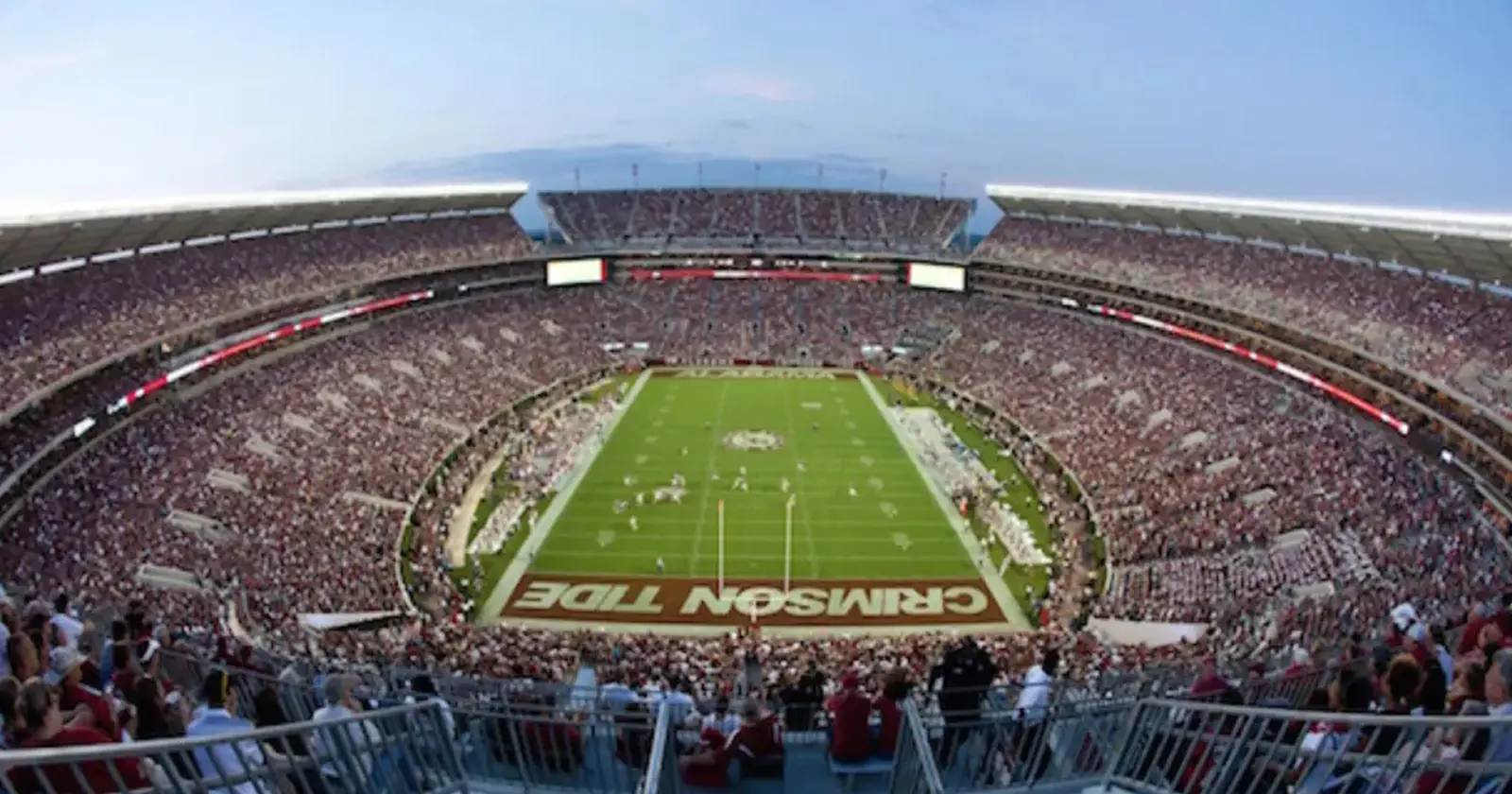
FAQ
What is the biggest stadium in the world in 2025?
By official published seating, Pyongyang’s Rungrado 1st of May Stadium leads at 150,000.
Why do so many top entries come from U.S. college football?
Universities spent decades expanding on-campus venues for all-day Saturday crowds, which pushed capacities past 100,000 while preserving traditions that keep demand high.
Which non-U.S. venues are closest to the 100k line?
Two stand out in this conversation: Narendra Modi Stadium at 132,000 seats and Australia’s MCG at 100,024 total capacity including standing room.
Do these rankings include standing room or event-day expansions?
No. The list uses official seating capacity. When a venue publishes standing allocations or special configurations, those figures are treated as context rather than the ranking metric.
Why isn’t every famous venue here?
Some icons fall just below the 100k threshold, others are under renovation, and a few publish only event-specific configurations. Capacity is a moving target, so official operator pages are the final word for inclusion.
The final whistle
Capacity is only one lens, but it reveals how sport builds community at scale. From the ceremony-sized largest stadium in the world in Pyongyang to India’s 132k cricket amphitheatre and America’s stacked 100k Saturdays, these venues show how engineering, tradition, and demand come together. If you are planning a stadium pilgrimage, start with this top ten, then add regional icons like the MCG or Wembley for a complete education in crowd energy.
Check Out Our Other Reports
- Top 15 Highest Rated Universities in 2025
- Top 15 Highest Rated Universities in United States 2025
- Top 15 Highest Rated Law Schools in 2025
- 20 of The Best Universities for Finance in the World
- Top 15 Highest Rated Canadian Universities in 2025
- The Top 10 Most Expensive NFTs Ever Sold
- Most Valuable Watch Brands in the World
- Largest American Fast Food Chains
- Best Streaming Services in the USA for 2025
- Top 10 Cities in North America With a Booming Real Estate Market
- Top 10 Largest Fast-Food Chains in the U.S.: The Chains With the Biggest National Footprint
- Top 10 Canadian Fast Food Chains: The Fast Food Companies Shaking Up Canada







